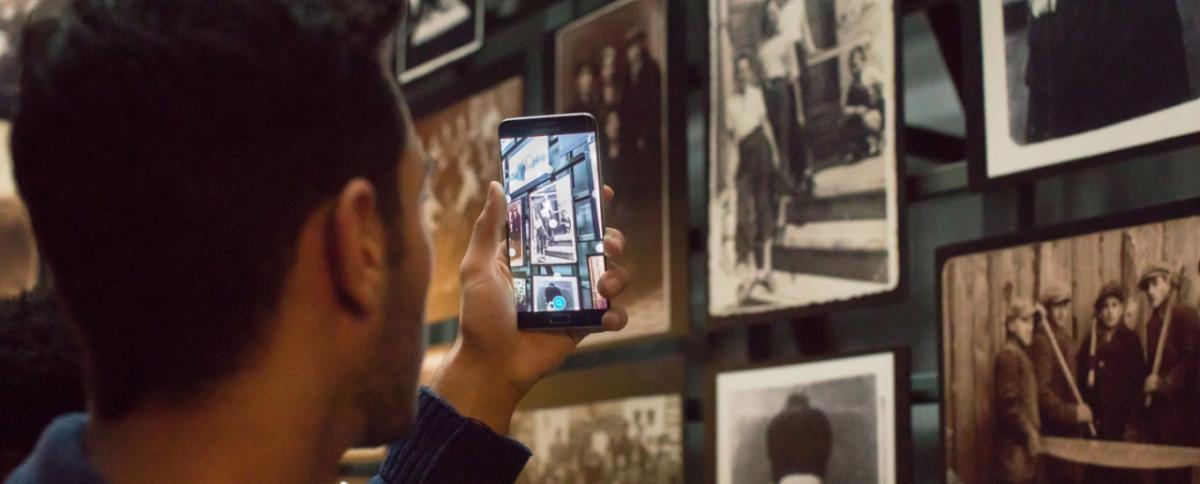Augmented Reality Brings History to Life
The United States Holocaust Memorial Museum is testing new ways for visitors to experience a personal connection to the families who lost their lives during the Holocaust.

Augmented Reality Brings History to Life
Fourteen-year-old Abby Blunt hardly knows what the world was like before smartphones — but technology is helping her with that.
During a recent trip to the United States Holocaust Memorial Museum in Washington, D.C., Abby roamed the “Tower of Faces” section of the main exhibition, smartphone in hand, eyes glued to her screen.
She spotted an old photo of a family on the wall. As she held the phone in front of the image, a text box popped up on her screen: One of the family members, a rabbi, was a leader in his community — and died before his family could escape the Holocaust.
The experience, she said, was eye-opening.
“My family has a religious background,” said Abby, who visited with a group of 35 students and seven chaperones from Saint Thomas More Catholic School in Spokane, Washington. “To know he was persecuted for his religion, and we are living ours every day, was upsetting. These were people who were innocent. We should learn more about them.”
Saint Thomas More Catholic was one of several schools that have been testing the museum’s Tower of Faces augmented reality pilot project this year. The Tower of Faces is part of the museum’s main exhibition and features numerous photographs of the residents of Eishyshok, a small Jewish village located in Lithuania (then part of Poland). Many of the residents were killed during the Holocaust or died when they tried to escape.
“The Tower of Faces is an incredible place for a variety of reasons,” said Michael Haley Goldman, director of the museum’s Future Projects division, which is piloting the project. “These are people you can relate to — families, youth groups, and school children — and the images are very personable. We often get questions about what’s going on and what happened to the people. We thought it would be great to tell people more.”
‘Their legacy is living on’When visitors hold one of the museum’s smartphones over a photograph, a text box appears that might, for example, provide caption information written on the back of the photograph that the public would not otherwise see. Because visitors have different mobile devices and technologies, the museum purchased smartphones for the pilot project with money Wells Fargo provided in 2017 through a grant of $13,250. The grant will also fund a virtual reality pilot program and another augmented reality pilot program; both are still being developed.
“Augmented reality and virtual reality technologies create spatial experiences akin to visiting a museum,” Haley Goldman said. “They put you into the experience in a more immediate way and help people understand and relate to history. It’s vital to put these in front of students and start learning with them about how to tell the stories we’re trying to tell. We hope to then have an impact and create memories.”
Jim McCollum, who teaches seventh- and eighth-grade science and history at Saint Thomas More Catholic School, said the experience has already influenced how he will teach his students about the Holocaust before they visit the museum next year.
“These are personal stories,” McCollum said. “They’re not just in the history books. The augmented reality experience and that exhibit show that it could happen in any town or to any family. That is what I’m going to be highlighting more next year, about the steps the average citizen could take and how we can’t let this repeat.”
Haley Goldman said the museum is not going to create an augmented reality experience for all of the photos in the exhibit, so the staff is trying to understand what draws people to certain images before introducing the program to the general public.
Abby said she and her classmates were grateful they were able to participate in the augmented reality experience.
“By learning more about these people and what happened to them, it makes you realize their legacy is living on,” she said. “We can look back on what they went through and can learn from it.”

